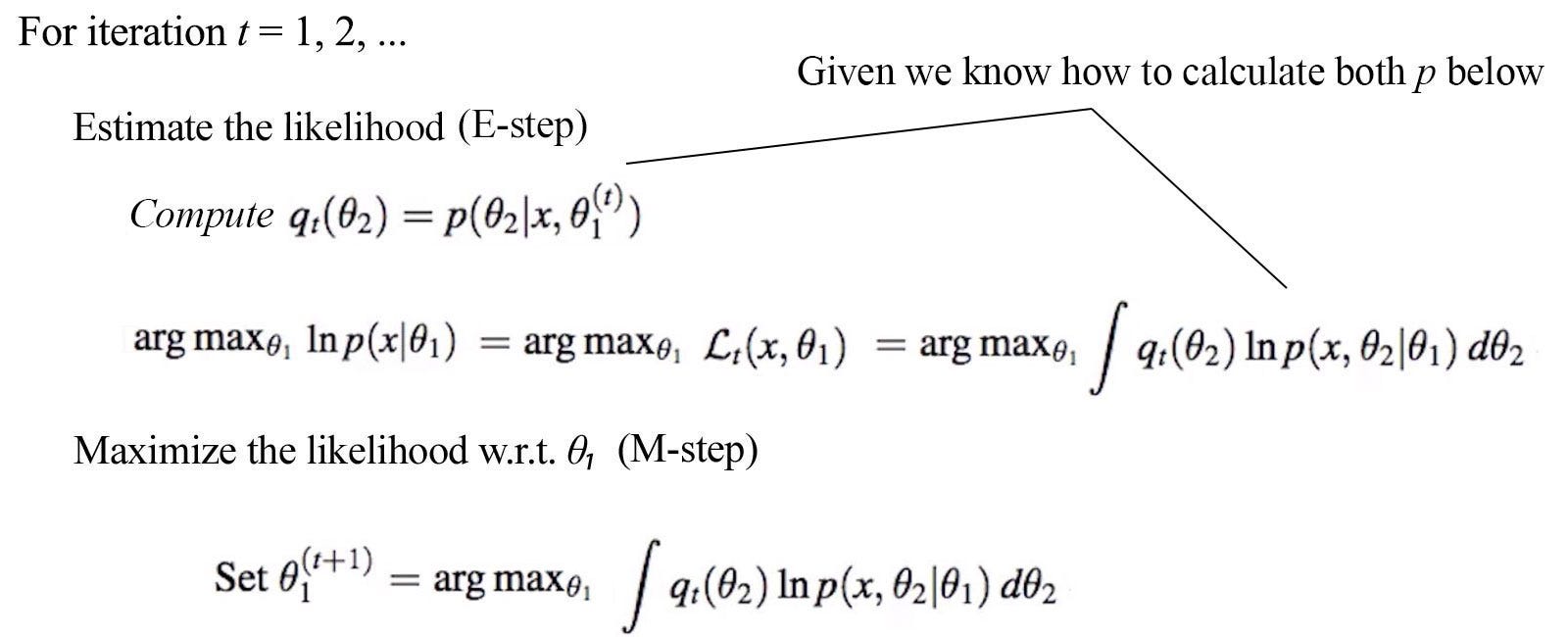Unique Em Algorithm Steps

These two steps are repeated as necessary.
Em algorithm steps. More generally however the EM algorithm can also be applied when there is latent ie. This is achieved for M-step optimization can be done efficiently in most cases E-step is usually the more expensive step It does not fill in the missing data x with hard values but finds a. Maximize this simplified Q function in terms of θ.
By the way Do you remember the. The expectation-maximization algorithm is a widely applicable method for iterative computation of maximum likelihood estimates. The EM Algorithm The EM algorithm is used for obtaining maximum likelihood estimates of parameters when some of the data is missing.
Θ_A 06 Θ_B 05 in our example. The K-means algorithm is the most famous variant of this algorithm. Given the parameters θt 1 from the previous iteration evaluate the Q function so that its only in terms of θ.
Each iteration is guaranteed to increase the log-likelihood and the algorithm is guaranteed to converge to a local maximum of the likelihood func-tion. In that case we simply assume that the latent. To summarize the EM loop aims to maximize the expected complete data log-likelihood or auxiliary function Qθ θt 1 in two steps.
EM Algorithm Steps. Generally EM works best when the fraction of missing information is small3 and the dimensionality of the data is not too large. It is worth noting that the two steps in K-means are actually using the idea from EM algorithm.
That is we find. 4 Convex Concave function and Jensens inequality. The algorithm iterates between performing an expectation E step which creates a heuristic of the posterior distribution and the log-likelihood using the current estimate for the parameters and a maximization M step which computes parameters by maximizing the expected log-likelihood from the E step.












